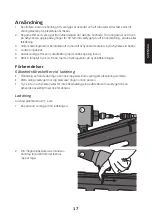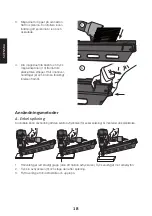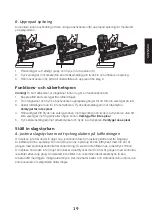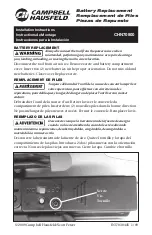
EN
G
LI
S
H
4
Compressed air feed and connections
Warning!
To prevent accidents due to unintended firing, the operator should always disconnect
the compressed air:
• Before adjusting
• When cleaning the tool
• When removing a jammed nail
• When the tool is not being used
• When moving the tool to another work area
Warning!
• Use only compressed air in pneumatically driven tools. Never use acid or flammable gases to
drive the tool since the mixture can explode and cause damage.
• Do not use gas in the container or compressed air system when the air pressure could
exceed 8 bar as the tool could explode and cause damage.
• The compressor capacity must be sufficient to ensure an adequate air pressure and flow for
the intended use. A fall in pressure in the system can reduce the tool’s thrust.
See
Technical data
for setting the right pressure for the tool.
• The compressed air lines should be mounted on an incline, with the highest point closest to
the compressor. An easily accessed water separator should be installed at the lowest points.
The water separator should be emptied at least once a day or more often if needed. Dirt and
water in the air lines are the main cause of wear in pneumatically actuated tools.
• The tool connecting bits should be equipped with a reducing valve with water separator
directly at the point of connection. A filter helps to achieve maximum effect at minimum wear.
The filter must have sufficient flow capacity for the intended mounting site or connecting
point. The filter must be kept clean if it is to be able to deliver clean compressed air to
the tool. See the manufacturer‘s instructions for proper filter care. A dirty or clogged filter will
cause a fall in pressure, which reduces the tool’s effectiveness.
• The pressure regulator must be adjustable from 0 to 8 bar.
• The air hoses should tolerate at least 10.5 bar working pressure or 150 % of the maximum
pressure of which the system is capable. The meter line should have a quick coupling so that
it can be loosened quickly from the nipple on the tool.
• Make sure that the compressed air fed to the tool is unable to exceed the maximum
permitted working pressure (8 bar); install a safety valve if needed. Begin first with the meter
pressure set to the lowest recommended working pressure. See
Technical data
.
• Check that the tool is working properly by pressing the gun nose against a piece of wood
and pressing the trigger one or two times.





































